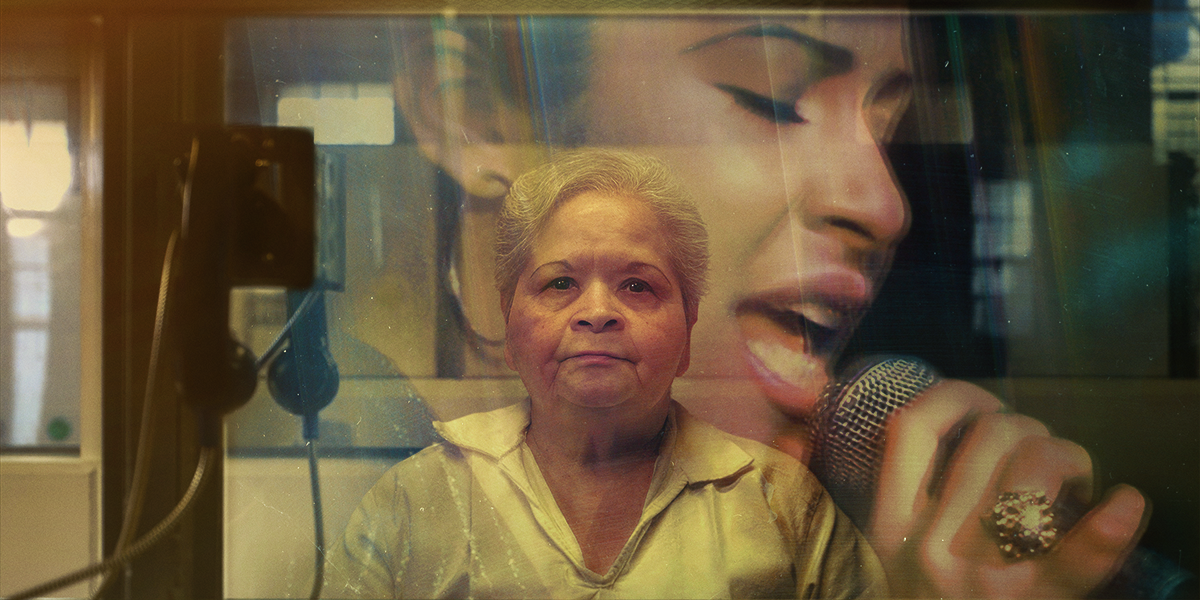In an upcoming Oxygen True Crime docuseries, Yolanda Saldivar, who killed Tejano star Selena Quintanilla by shooting her in the back, claims she has a new story to tell about the 1995 murder. But the Mexican-American community and Selena fans see it for what it is: a true-crime network’s exploitation of the tragic death of a Latino icon.
“After so many years, I think it’s time to set the story straight,” Saldivar says from prison in a preview of Selena & Yolanda: The Secrets Between Them. The series premieres with back-to-back episodes on February 17 and 18.
The “secrets” will air (what a coincidence) a month before the anniversary of Selena’s death and a little over a year before Saldivar is eligible for parole in 2025.
The series promises that in several “wide-ranging interviews from prison,” Saldivar, who was president of Selena’s fan club and manager of her two boutiques, will exclusively divulge her “interpretation of events.”
Of course, there will also be the “never-before-revealed documents and recordings” and first-time interviews with Saldivar’s family members to add to the toxic true-crime mix.
Yet, what possible new story can Yolanda reveal that she hasn’t hashed out in countless interviews on shows like Univision’s Primer Impacto, Telemundo, and a 1998 interview with the show Beyond the Music – just to name a few?
In these interviews, Saldivar is manipulative and cunning, proclaiming the shooting was an accident and blaming almost everyone but herself – including Selena’s father, Abraham Quintanilla – for making her “do it.”
The question remains: Why didn’t she unveil those “secrets” and exonerate herself during her day in court?
Let’s be clear – Selena & Yolanda: The Secrets Between Them is a naked and unscrupulous ratings grab. In 2022, Oxygen True Crime ranked as the fastest-growing top 30 cable entertainment network among total viewers in primetime and total viewing throughout the day.
I imagine network executives thought Saldivar would be raw meat to the viewers. I am also willing to bet there were no Latinos at the editorial meeting that decided to air the docuseries because you damn well know what they would have said.
This is how low Oxygen True Crime and the genre of crime series are willing to go (beyond the Jeffrey Dahmers and Ted Bundys of this world) to exploit the death of the 23-year-old known as The Mexican Madonna.
Sadly, the network will probably get the ratings, but at what cost? The decision to give Saldivar more air time is beyond tone-deaf. If Oxygen wanted to alienate the powerful Latino viewing public, which heavily influences the popularity of streaming shows, this docuseries is the perfect way to do it.
The anger of Selena’s fans worldwide is all over social media. Search “Anything for Selenas” or “We Ride at Dawn,” and you’ll see.
“What is Yolanda talking about, it’s time to set the record straight?,” djlostone posted on Tik Tok. “The record is Selena Quintanilla is gone, and it’s all your fault.”
“This woman tries, tries so hard to be relevant. Selena has a secret. I know that secret” HauntedLaGirl posted on TikTok. “This woman will forever know what she did. Think about it; it took eleven pounds of pressure to pull that trigger.”
It struck me that the outrage is not only from Latina women and men but also from white, African-American, and Asian women, white and African-American men, and members of the LGBTQ community across those groups. They all take off their imaginary hoop earrings and pull their hair back, waiting for Saldivar to exit jail.
Tik Toker bigizzothemadtitan said it best: “See, I don’t know about you, but this is proof that the Oxygen network don’t got any f*****g Latino, specifically speaking Mexican or Mexican-American, working for them.” Because if there had been, the Latino “would have flipped the f*****g table.”
It’s despicable to give a platform to Saldivar so she can thrive on the attention – again. Isn’t it telling that on the day of her sentencing, while she waited to hear her fate, Saldivar occupied herself by signing autographs for the reporters and people in the gallery.
I was in the newsroom working the day Selena died. When I heard the news, I called home and asked the babysitter to turn off the television and radio. My daughter, then about seven years old, loved Selena. I didn’t want her to see or hear that her icon had been killed.
I will do that again with this new iteration of Saldivar’s “story.” I will turn every screen off. And I won’t be the only one.

